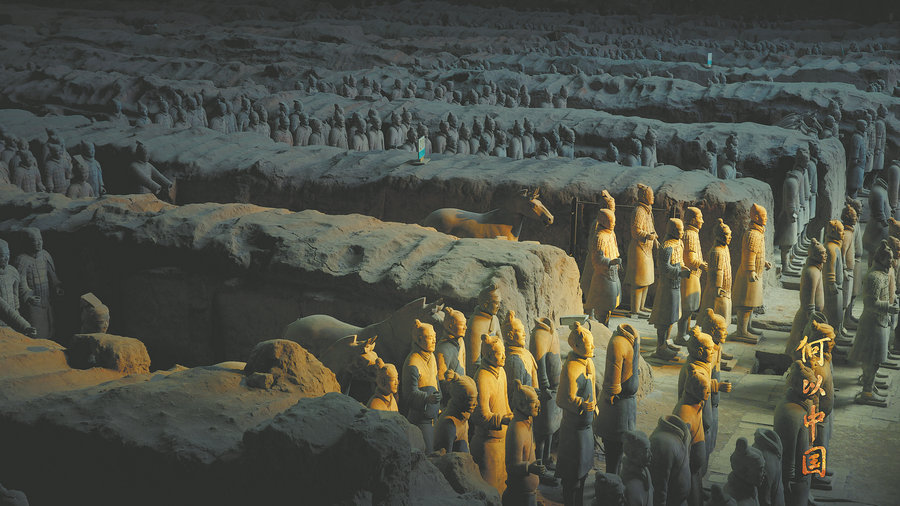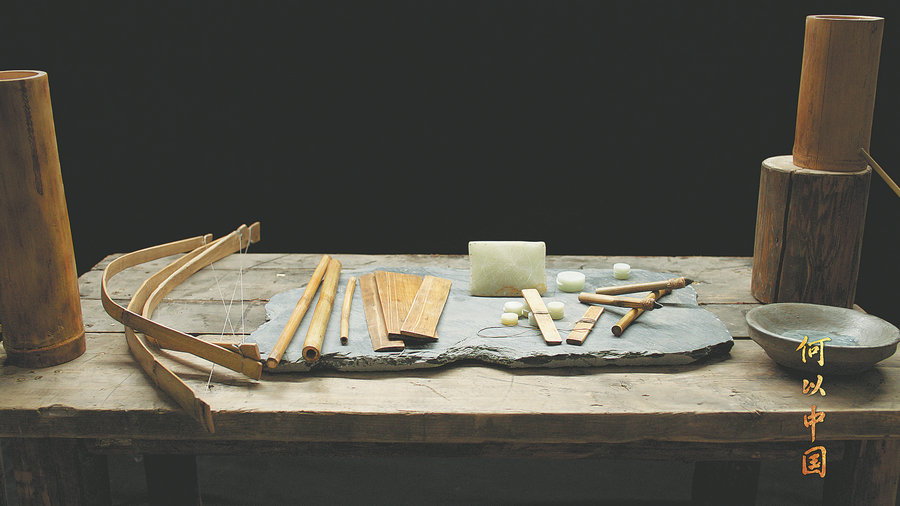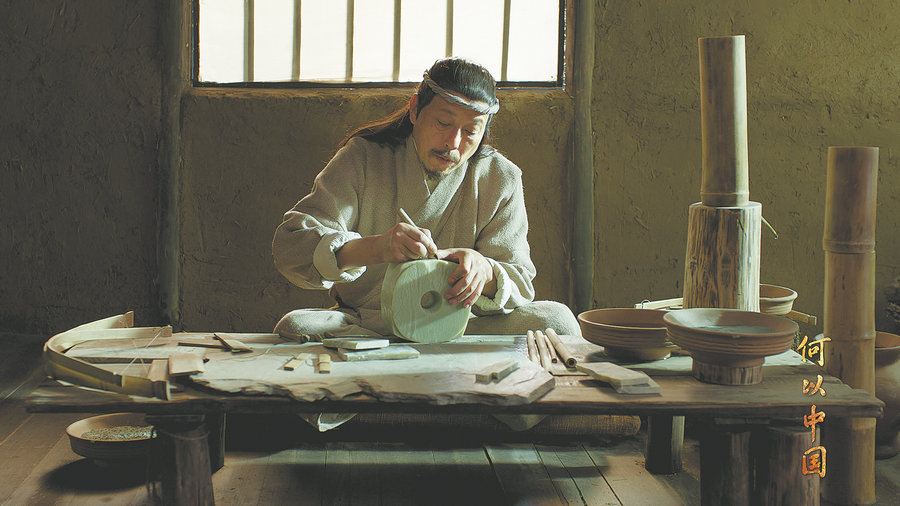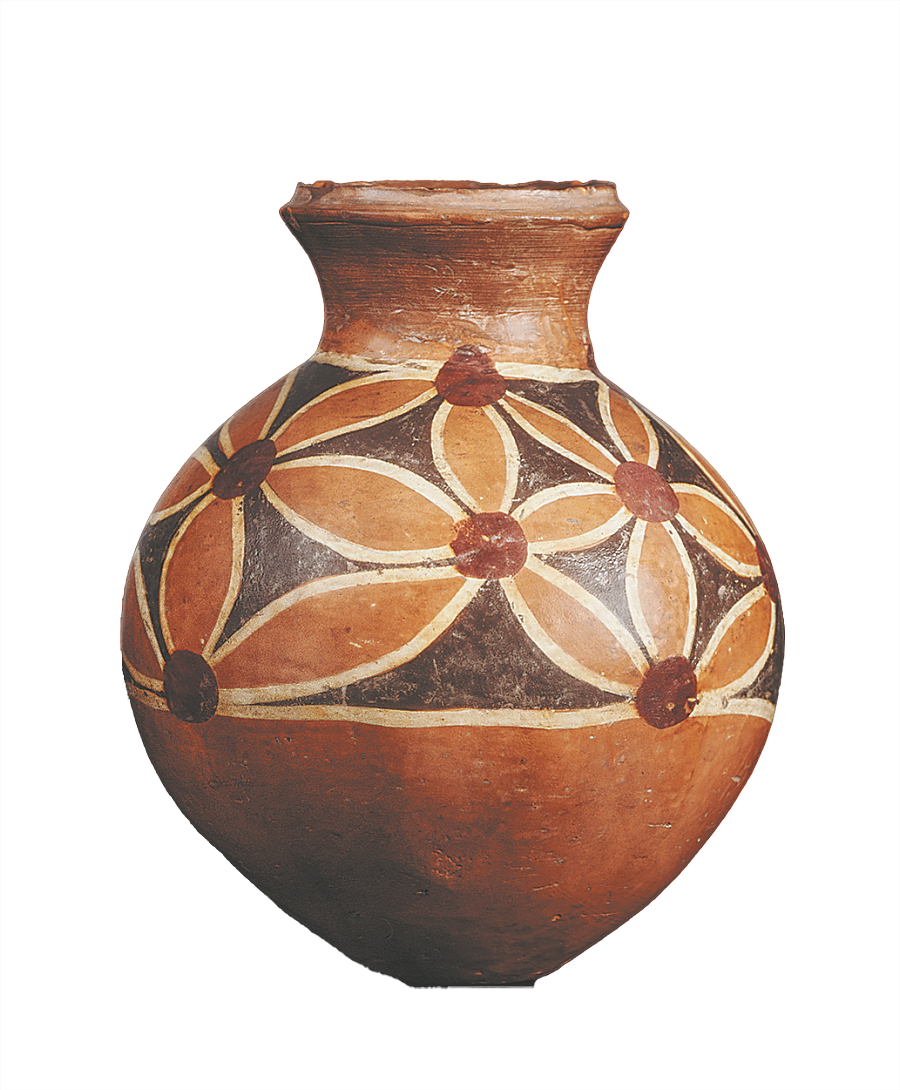accessible documentary explores china before china

2024-01-31 10:00
share to

eight-parter examines origins of chinese culture and politics and contribution to modern country, tracing roots back to the paleolithic period, fang aiqing reports.
time flows according to its own rhythm. but over the course of tens of thousands of years, the numerous individuals who lived within it, each for a period as short as a shooting star flashing across the night sky, have knit the vicissitudes of life, partings and reunions, sorrow and joy, into the magnum opus of history.
this is also true in china, where the emperors and nobles, heroes and heroines whose names and deeds have been recorded in written documents and oral legends passed down through the ages, as well as the ordinary people whose lives have left traces only on the cultural relics they left behind, have fascinated generations of archaeologists, their nature and cultural genes key to understanding why and how china has become the country it is today.
this is the idea conveyed by the eight-episode documentary, china before china, which tells the story of the origins and early development of chinese civilization, and contemporary attempts to portray ancient societies based on archaeological findings.
the series, a joint effort between a video production team and hundreds of archaeologists from across the country, is currently airing each week on shanghai-based dragon tv, as well as on streaming platforms bestv, iqiyi, tencent video, youku and bilibili.
"what we want to explore are the characteristics of chinese civilization and its spirit that have been transmitted through our blood, and from which we can trace the cultural genes that make us the chinese people," says jin ruiguo, director of the news center of the national cultural heritage administration and chief supervisor of the documentary.
"they reflect the origins of chinese civilization and are the roots of confidence in our culture," he adds.

as the narration says, the documentary presents the way "people throughout history have made their efforts to live their lives".
chief director gan chao says their aim was to depict the more specific social landscapes of our ancestors, but with a human touch that makes people on different rungs of the social ladder visible.
drawing the specific details of history from piles of ancient documents, cultural relics and archaeological sites — as well as the inferred social evolution behind the artifacts — they have established an emotional connection with today's audience by telling individual stories, the director adds.
apart from their well-organized and beautifully written narration, the series digs deep into the information contained in archaeological sites and cultural relics, on the basis of which they used digital technology to bring ancient architecture and cities back to life, and invited actors to re-create scenes of daily life and production, as well as feasts, ritual ceremonies and other scenarios.
the costumes and ornaments the characters wear, the tools, utensils and sacrificial offerings they use, as well as the ritual procedures they experience, are the fruit of rigorous, multidisciplinary research. all of this provides the audiences with a direct, visual idea of the long past.
"the findings from archaeological excavations and associated research are the foundation of accuracy, and yet, we have to create a sense of reality in the historical scenes for the audience to feel engaged with the ancient societies we've re-created," says qin ling, associate professor at peking university's school of archaeology and museology, and chief academic producer of the documentary.
for example, in the fourth episode, the audience is able to see what liangzhu may have looked like more than 5,000 years ago. the archaeological ruins of liangzhu city, which is located in today's hangzhou in zhejiang province, was inscribed as a unesco world heritage site in 2019.

digital technology has been used to reproduce the grand capital, which was located on vast green plains. the city had a remarkable water and moat network, mostly composed of artificial waterways, and eight of its nine city gates were water gates.
as very little waste has been found in these former waterways, this would seem to indicate that they were strictly controlled to ensure smooth water traffic, the episode's narrator explains.
he adds that in the center of the city, an area known as mojiaoshan, a 10-meter-tall man-made terrace was home to the palaces of kings and nobles, as well as other ceremonial architecture. the episode shows the king and queen, accessorized with various jade ornaments from head to chest, being escorted by lesser leaders as they attend a major sacrificial ceremony.
he says that outside the palatial complex were workshops making high-end handicrafts like jade and lacquer ware and the artisans' residences, as well as the mausoleums of the upper classes, and that thick walls encircled the inner city. civilians lived in small settlements on the outskirts.
west of the ancient city, between the canal-laced flatlands and the verdant tianmu mountains, the remains of a system of upstream and downstream reservoirs have been found.
as the largest dam system in the world at the time of liangzhu, it had a pondage capacity three times the size of west lake in hangzhou today.
zhao hui, a professor at peking university's school of archaeology and museology, who was part of the pre-review of the documentary, says the costumes, props and scenes accord with academic advice and have avoided exaggeration.
"the documentary centers around the historical evolution of early chinese civilization and aims to create an integral, logical and vivid narrative. it's a difficult and rare attempt," he adds.
according to zhao, archaeological work and more than a century of academic accumulations enabled a preliminary overview of history, all of which has been woven into this inspirational series, which is accessible to people from all walks of life.
the first episode, which features the qin (221-206 bc) and han (206 bc-ad 220) dynasties, reveals the formation of a united, centralized and multi-ethnic country, with archaeological evidence showing the measures taken to sustain unification and efficient administration over a vast area.
from the second episode, the documentary rewinds to the paleolithic period, and delicately presents the gradual evolution of chinese civilization since its infancy, all the way through to the emergence of the dynastic state around 3,800 years ago, when the main thread of chinese history began, to when the country became a united empire during the qin and han eras.
"we intended to show what china was like before expounding on how and when its characteristics were cultivated. it's like throwing out the answer first, and then explaining our way of thinking," qin ling says.
in this way, later episodes take time to unfold the historical timeline. from the paleolithic to around 6,000 years ago, ancient people gradually began to settle, inventing pottery for daily use, exploring primitive agriculture and practicing deity worship.
the documentary also delves into the various ancient cultures that emerged from about 6,000 to 5,000 years ago in different parts of the country, through which a range of regional characteristics developed, amid a general trend of intensifying social inequality and differentiation, and the increasing use of pottery and jade ware, the latter mostly in the form of ritual and funerary objects.

a pedal-patterned pottery piece unearthed from the dawenkou site in shandong province.
this period saw the flourishing of the hongshan culture, located in the west liaohe river basin in today's northeast china; the dawenkou culture, mainly in today's shandong province, and the miaodigou culture in the central plains region — both representatives along the yellow river — as well as the daxi, lingjiatan and songze cultures of the yangtze river basin, among others.
the spread of painted miaodigou pottery, with both concrete and abstract artistic expression, and the similarities in the shape and ritual use of jade among these different cultures, suggest that the upper-class members of these societies enjoyed frequent interaction and exchanges.
these regional cultures, often dubbed "stars shining all over the sky" by chinese archaeologists, developed in parallel, each with their own strengths, cultivating diversity in chinese civilization, while building potential for future integration.
slightly later, the 5,000-year-old archaeological sites, such as liangzhu, qujialing and shijiahe in hubei province, ushered in an era of ancient states, which were either bonded by beliefs, ritual practices or the secular wisdom of governance.
they flourished before the central plains and northern cultures, such as taosi, in today's shanxi, and shimao in today's shaanxi province and, finally, erlitou in today's henan province, rose around 3,800 to 3,500 years ago, took the lead and became china's earliest dynastic state.
the last three episodes review the shang (c. 16th century-11th century bc) and zhou dynasties (c. 11th century-256 bc), their rise and decline, bronze age cultural — that of the sanxingdui archaeological site in sichuan province, in particular — political, ethical and ritual systems, and how they were involved in the process of the country's unification.
to make this brief history of early chinese civilization work, the production team filmed some 230 archaeological sites and museums over the past three years, and these video clips will also be screened at 18 museums involved.
the shanghai media group, which produced the series, will be working with warner bros discovery on the production and promotion of its international versions, as the two sides signed a memorandum of understanding on cooperation on dec 9.
source: china daily
promotion advertisement
hot selection

the 2nd forum on global communication of chinese stories to be held in hong kong
2024-03-11

aigc studio to assist shanghai in building world-class industrial cluster for ai
2024-02-28

new year greetings to friends of china pavilion!
2024-02-04

china pavilion at tv festival of the content americas 2024
2024-02-02
latest notice
call for films | seagulls film festival
2024-03-14
first art & vision certain unit calls for entries worldwide
2024-03-04
call for films | cathayplay seeks chinese language anthropological images from around the world
2024-02-26
call for films | short films for the 8th china science fiction convention 2024
2024-02-04